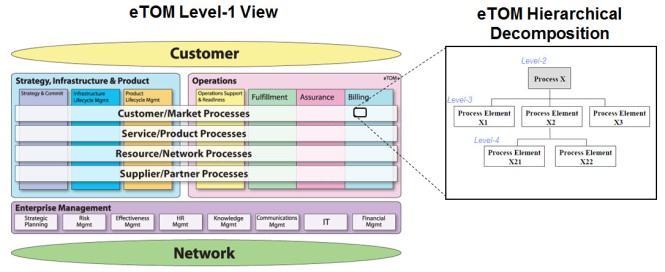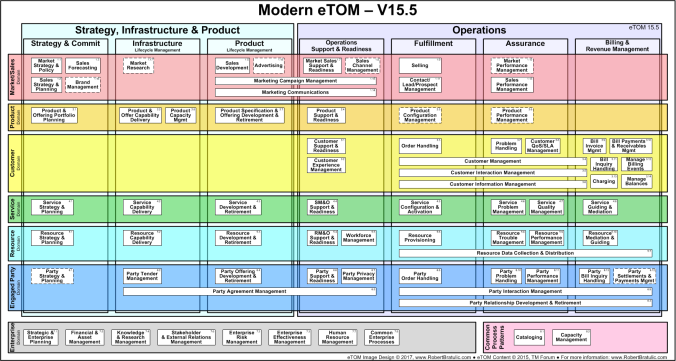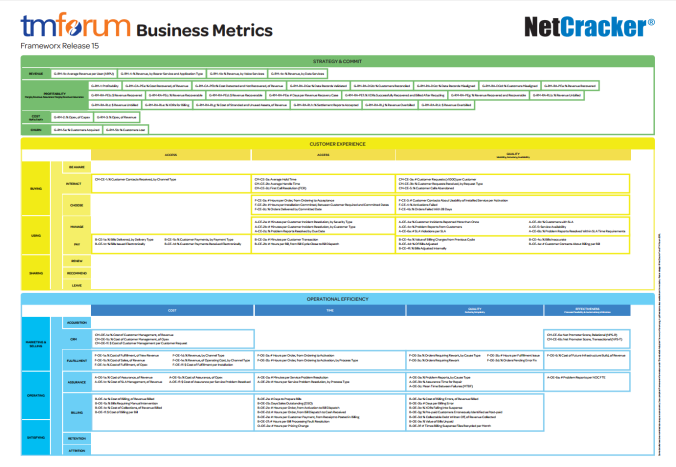eTOM (enhanced Telecom Operations Map) is the telecommunications industry’s standard business process framework. It sounds paradoxical, but the eTOM framework does not contain process flows itself. eTOM gives you the building blocks with which to build a process flow, but these building blocks are organized by parent-child process hierarchy. To connect with business people, you do need to have the flows!
In the diagram below, you see a typical eTOM process pattern on the right, a process hierarchical decomposition, which happens to reside in the Billing vertical and the Customer Management row. It could for example be “Bill Invoice Management”, and its sub-tasks, Pricing and Discounting, and their sub-tasks, and so on.

eTOM is organized as this two-dimensional grid housing hundreds of such hierarchical process decompositions, i.e. “tree diagrams” – which is great for classifying “what” a process does into categories and sub-categories — but eTOM does not spell out any actual process flows, i.e. “blocks and arrows” – which people look for to understand “how” a process actually unfolds over time.


